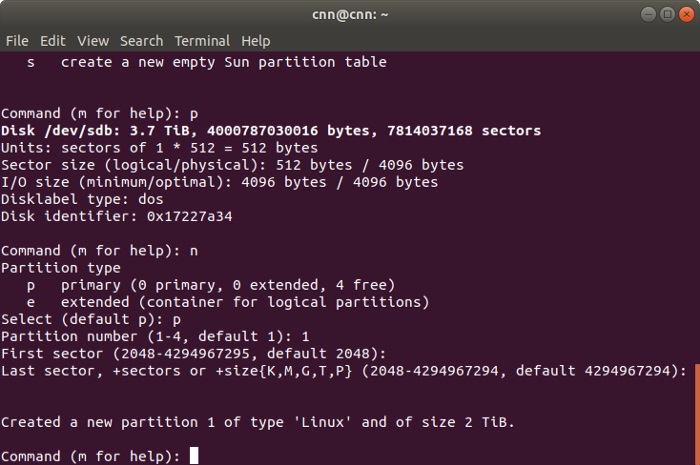

# Now we know only 1 partition exists on /dev/sdb It was also easy, from there to create new partitions, in a straight-forward way. I found f3probe ( ) solved the problem of deleting all the partitions, quickly and easily, working with large capacity drives, and created exactly 1 partition spanning the whole drive, which was easy to delete. That deleted the partition but some partitioning software apparently found the partition backups automatically. I wanted to do the same thing (except in Slackware 14.2) but found I could not effect most of the solutions proposed here, with the most elaborate and well-documented solution creating new problems for making replacement partitions. It will prompt you to select the partition: Found valid MBR and GPT. Then umount the drive and call gdisk for the device: sudo gdisk /dev/sdX.
#LINUX CLEAN DISK INSTALL#
(If you want to wipe the extended partition table, you'll need to know more about the operating system different operating systems do extended partitions in different ways.) It isnt installed by default, so get it with: sudo apt-get install gdisk. BleachBit includes a good list of cleaners such as removal of APT packages, thumbs.db, cache, browser cache & cookies, log files, backup files, etc.
#LINUX CLEAN DISK UPDATE#
sudo apt update sudo apt install bleachbit. The primary partition table within the MBR (so, not talking about GPT here) is located 446 bytes in, so we instruct dd to seek 446 bytes in before writing.Įxtended partitions are generally created by using a primary partition slot to point at the extended partition table, so if we erase the 4 primary partitions, we effectively wipe the extended partition table as well the OS won't be able to find it, so it won't be able to read and interpret it. Alternatively, you can use below commands to install it.

Here, we tell dd to write 64 blocks (or bytes, because of our bs=1 parameter), since the primary partition table consists of 4 16-byte partition entries, for a total of 64 bytes. However, we need to address things more precisely than that, so we tell dd to use a block size of 1 byte. The default block size may be 512 bytes, 1024 bytes or 4096 bytes, depending on your system.

Here, we specify which device we're writing to. Here, we specify that we're reading from /dev/zero, which is a special device which emits NUL bytes-zeros. It's the simplest flexible tool for this job. This standard command copies bytes from a source and writes them to a destination. dd if=/dev/zero of=/dev/ bs=1 count=64 seek=446 conv=notrunc If we're talking about MBR-style partitions.


 0 kommentar(er)
0 kommentar(er)
